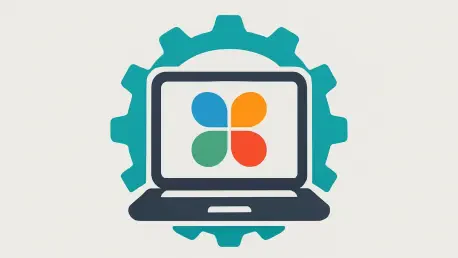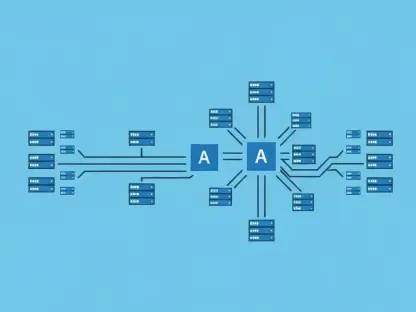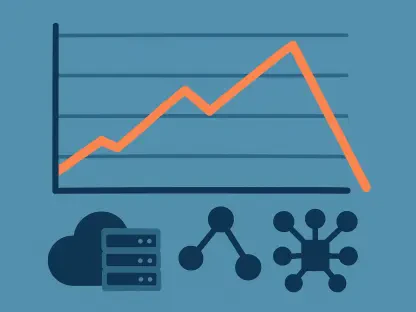In today’s competitive market, crafting a memorable logo is vital for any business aiming to establish a strong brand identity, and the choice of design software can significantly impact the outcome of that creative process. A logo serves as the visual cornerstone of a company, often being the first interaction potential customers have with a brand. However, with an array of software options flooding the market, each promising unique features and catering to varying skill levels, selecting the right tool can become a daunting task. Whether the goal is a quick design for a startup or a meticulously crafted emblem for an established firm, the right software can streamline the process and elevate the result. This exploration dives deep into some of the leading logo design tools available, breaking down their functionalities, strengths, and ideal user bases. By evaluating factors such as usability, cost, and technological innovation, this discussion aims to guide businesses toward a solution that aligns perfectly with their branding aspirations and practical constraints.
The landscape of logo design software offers something for everyone, spanning from intuitive platforms that simplify the process for novices to sophisticated tools that empower professionals with intricate control. Beyond just personal skill level, considerations like budget, output quality, and the integration of modern technologies such as artificial intelligence shape the decision-making process. High-resolution outputs ensure logos remain crisp across digital and print media, a non-negotiable for effective branding. Additionally, the cost spectrum—from free tools to premium subscriptions—plays a critical role in determining accessibility for businesses of all sizes. As technology evolves, so do the methods of design, with AI-driven platforms gaining traction for their ability to automate and personalize the creative journey. This blend of traditional and cutting-edge approaches creates a diverse pool of options, ensuring that every business can find a tool tailored to its unique needs and vision for brand representation.
Exploring Top Logo Design Platforms
Adobe Illustrator: The Professional’s Choice
Adobe Illustrator remains a cornerstone in the realm of professional design, renowned for its robust vector editing capabilities that allow for the creation of scalable, detailed logos suitable for any application. This software excels in providing advanced typography options and precise control over every design element, making it a preferred choice for experienced designers who require intricate outputs. Its seamless integration with other Adobe Creative Cloud applications further enhances its appeal, offering a cohesive workflow for those already embedded in the ecosystem. However, the complexity of its interface can pose a significant barrier to beginners, often requiring a substantial time investment to master its full range of features. Additionally, its subscription-based pricing model might deter smaller businesses or individuals with limited budgets, positioning it as a tool best suited for those committed to professional-grade design work.
For users seeking to push the boundaries of creativity, Adobe Illustrator offers unparalleled flexibility, enabling the crafting of logos that stand out in a crowded market through custom shapes and detailed adjustments. Its ability to produce vector graphics ensures that logos maintain clarity at any size, a crucial factor for branding across diverse mediums like billboards or business cards. While the learning curve may be steep, the software’s extensive library of tutorials and community support can help bridge the gap for determined learners. It’s particularly ideal for design agencies or in-house teams that prioritize precision and long-term scalability over quick turnaround times. Despite the cost, the regular updates provided through the subscription ensure access to the latest tools and features, keeping designs aligned with current industry standards and technological advancements.
Canva Logo Maker: Versatile and Beginner-Friendly
Canva Logo Maker has emerged as a go-to solution for users across all skill levels, thanks to its intuitive drag-and-drop interface that simplifies the design process without sacrificing quality. With thousands of customizable templates, users can quickly create professional-looking logos by tweaking colors, fonts, and icons to match their brand’s aesthetic. The platform’s mix of free and premium elements ensures accessibility for those on a budget while offering upgraded options for more polished results. Its real-time collaboration feature also makes it a practical choice for teams, allowing multiple stakeholders to contribute ideas and feedback seamlessly. This tool is especially beneficial for small businesses or entrepreneurs who need a quick, effective branding solution without delving into complex software.
Beyond its ease of use, Canva Logo Maker stands out for its adaptability, catering to a wide range of industries with templates tailored to specific niches, from tech startups to retail shops. The platform’s cloud-based nature means designs can be accessed and edited from anywhere, which is a boon for remote teams or individuals juggling multiple projects. While it may lack the depth of customization found in more advanced tools, its focus on speed and simplicity often outweighs this limitation for non-designers. High-resolution downloads ensure that the final product is ready for both digital platforms and printed materials, meeting the essential needs of most small to medium-sized enterprises. For those just starting out, Canva provides a low-risk entry point into logo creation, balancing functionality with a user-friendly experience.
LookAI-Powered Efficiency
Looka distinguishes itself by harnessing artificial intelligence to generate unique logo designs based on user inputs, streamlining the creative process for those who may lack design expertise. By answering a few questions about style preferences and industry, users receive a curated set of logo options that can be refined with unlimited revisions, ensuring the final design aligns with their vision. Beyond just logo creation, Looka offers additional branding tools such as business card designs and social media kits, providing a comprehensive solution for establishing a cohesive visual identity. This makes it an attractive option for entrepreneurs and small businesses looking to build a consistent brand presence with minimal effort and time investment.
The efficiency of Looka’s AI-driven approach cannot be overstated, as it significantly reduces the time typically spent on brainstorming and drafting initial concepts, allowing users to focus on fine-tuning their designs. While some might find the automated process less hands-on compared to traditional design software, the ability to iterate quickly often compensates for this. The platform’s pricing, though not free, remains competitive, especially considering the added value of branding assets that extend beyond a single logo. For businesses aiming to launch swiftly in a competitive market, Looka provides a modern, tech-savvy solution that prioritizes speed without compromising on the professional appearance of the output. Its focus on holistic branding tools also caters to the growing need for integrated marketing materials in today’s digital-first landscape.
Modern Trends in Logo Design Tools
Designhill Logo Maker: Balancing AI and Affordability
Designhill Logo Maker combines the power of AI technology with an accessible interface, offering a budget-friendly entry point for creating professional-quality logos at a starting price that won’t strain finances. Users can explore its features through a free trial, experimenting with various design elements before committing to a purchase. The platform supports a range of file formats, ensuring compatibility across different mediums, and provides industry-specific customization options that cater to niche branding needs. This blend of affordability and functionality makes Designhill a compelling choice for startups or individuals seeking quick results without the hefty price tag often associated with premium design tools.
Another strength of Designhill lies in its ability to balance automation with manual customization, allowing users to leverage AI-generated designs while still tweaking details to achieve a personalized look. This hybrid approach addresses a common concern with AI tools—lack of originality—by giving users the freedom to adjust elements like layout and color schemes. The platform’s focus on delivering high-resolution outputs ensures that logos are ready for both online and offline applications, meeting the practical demands of modern branding. For those wary of subscription models or high upfront costs, Designhill offers a cost-effective alternative that doesn’t skimp on quality, making professional design accessible to a broader audience and supporting businesses in their early growth stages.
Hatchful by Shopify: Free and Focused on Small Businesses
Hatchful by Shopify provides a completely free platform tailored specifically for small businesses and beginners, eliminating financial barriers to effective branding with a straightforward design process. Users can choose from a wide array of templates and customize them with ease, adjusting colors, fonts, and icons to reflect their brand’s personality. The inclusion of social media asset packs, optimized for platforms like Instagram and Twitter, demonstrates an understanding of contemporary marketing needs, ensuring logos are ready for digital engagement. With no hidden fees, Hatchful stands as a transparent, accessible option for those just starting out or operating on tight budgets.
The simplicity of Hatchful’s interface is a key draw, enabling even those with no design background to produce polished logos in minutes, which is crucial for entrepreneurs focused on rapid market entry. While its feature set may not match the depth of premium tools, the focus on essential branding elements ensures that the core needs of small businesses are met effectively. High-quality downloads guarantee that logos maintain clarity across various formats, from website headers to promotional flyers. This tool’s alignment with Shopify’s ecosystem also hints at potential integrations for e-commerce ventures, adding subtle value for online sellers. Hatchful proves that cost-free solutions can still deliver impactful results, empowering smaller entities to compete visually in crowded markets.
Key Factors in Choosing Your Tool
Usability and Skill Level Compatibility
When selecting logo design software, usability often emerges as a deciding factor, as tools vary widely in their complexity and target audience, impacting how effectively they can be adopted by users with differing expertise. For beginners, platforms like Canva and Hatchful offer intuitive interfaces that minimize the learning curve, featuring drag-and-drop functionalities and pre-designed templates that simplify the creative process. These tools prioritize accessibility, ensuring that individuals without formal design training can still achieve professional-looking results. In contrast, software like Adobe Illustrator caters to seasoned designers, offering a depth of features that require familiarity with design principles to fully utilize. Assessing one’s comfort level with technology and design concepts before choosing a tool can prevent frustration and ensure a smoother workflow tailored to specific capabilities.
Beyond initial ease of use, the long-term learning potential of a tool also warrants consideration, as some platforms provide resources to help users grow their skills over time, while others remain focused on simplicity. For instance, while Canva offers straightforward functionality, it also includes tutorials that can gradually introduce users to more advanced techniques. On the other hand, Adobe Illustrator’s steep learning curve is offset by a vast community of professionals and extensive documentation, supporting those willing to invest time in mastering it. Matching a tool’s usability to the intended user’s skill set not only enhances efficiency but also ensures the design process remains enjoyable rather than overwhelming. Businesses must weigh whether immediate results or long-term skill development aligns better with their branding strategy, as this balance directly influences the effectiveness of the chosen software.
Customization and Output Quality
Customization stands as a cornerstone of logo design software, enabling users to tailor elements like fonts, colors, and icons to create a visual identity that resonates with their brand’s ethos and stands out in a competitive space. Across the spectrum of tools, this feature varies in depth—platforms like Canva and Hatchful provide ample template-based options for quick personalization, ideal for users seeking efficiency. Meanwhile, Adobe Illustrator offers granular control, allowing for bespoke designs through custom shapes and detailed adjustments, catering to those who prioritize uniqueness. The ability to adapt a logo to specific needs ensures it can evolve with a business, maintaining relevance as markets and trends shift, making this a critical aspect to evaluate when selecting a design tool.
Equally vital is the output quality of the final logo, as it must retain sharpness and clarity across diverse applications, from digital screens to physical prints like business cards or signage. Most leading software, including Looka, Designhill, and the others discussed, meet this standard by providing high-resolution downloads, ensuring versatility in usage without pixelation or loss of detail. This consistency in quality is non-negotiable for effective branding, as a poorly rendered logo can undermine credibility. Users should verify that their chosen tool supports the necessary file formats for both online and offline needs, as this directly impacts the logo’s functionality in real-world scenarios. Prioritizing both customization and output quality guarantees that the end result not only reflects the intended vision but also performs reliably across all intended platforms.
Budget and Technology Considerations
Cost Structures: Free vs. Premium Models
Budget considerations play a pivotal role in the selection of logo design software, as the financial investment can vary dramatically between free tools and premium or subscription-based options, influencing accessibility for businesses at different stages. Platforms like Hatchful by Shopify offer a no-cost entry point, providing essential design features without any financial commitment, which is ideal for startups or small ventures with limited resources. In contrast, tools like Adobe Illustrator operate on a subscription model, delivering advanced functionalities at a recurring cost that may suit established firms or professionals who require consistent updates and robust features. Meanwhile, services like Looka and Designhill strike a middle ground with one-time or tiered pricing, balancing affordability with added value. Evaluating the financial capacity against the desired scope of features ensures that the chosen tool aligns with both immediate and long-term fiscal planning.
The decision between free and premium models also hinges on the scalability and future needs of a business, as initial savings might come at the expense of limited functionality that could hinder growth down the line. Free tools, while accessible, often restrict access to premium templates or high-end customization, potentially capping creativity for more ambitious projects. Premium options, though costlier, frequently include extras like branding kits or integration capabilities that can save time and money in broader marketing efforts. For instance, investing in a tool like Canva’s premium plan might provide collaborative features that streamline team projects, justifying the expense for growing enterprises. Businesses must carefully assess whether short-term savings or long-term investment in comprehensive tools better serves their branding objectives, ensuring the cost structure supports sustained development without unnecessary strain.
The Role of AI in Streamlining Design
Artificial intelligence has become a transformative force in logo design software, reshaping how users approach creativity by automating complex processes and making professional results accessible to those without extensive design backgrounds. Tools like Looka and Designhill exemplify this trend, using AI algorithms to generate tailored logo concepts based on user preferences, significantly reducing the time spent on initial drafts. This technology analyzes inputs such as industry type and style choices to propose designs that can be further refined, offering a starting point that feels both personalized and efficient. For non-designers or businesses under time constraints, this innovation lowers the barrier to entry, enabling the creation of polished logos without needing to master traditional design skills, thus democratizing branding in a meaningful way.
However, the integration of AI also introduces a contrast with traditional tools like Adobe Illustrator, which emphasize manual control and detailed craftsmanship, appealing to users who value hands-on creativity over automated suggestions. While AI-driven platforms excel in speed and ease, they may occasionally limit the depth of originality for those seeking truly unique outputs, as designs can sometimes feel formulaic due to reliance on preset algorithms. Traditional software, though more time-intensive, allows for bespoke elements that reflect nuanced brand stories, a priority for some designers. The growing prevalence of AI reflects a broader shift toward inclusivity in design technology, catering to a wider audience while still leaving room for conventional methods to thrive. Businesses must consider whether the efficiency of AI aligns with their creative goals or if the precision of manual tools better suits their vision for a distinct brand identity.
Navigating Future Branding Decisions
Reflecting on the exploration of various logo design tools, it became evident that each platform—whether Adobe Illustrator with its professional precision, Canva with its accessible versatility, or AI-driven solutions like Looka and Designhill—offered distinct advantages tailored to specific user needs. Hatchful by Shopify also proved its worth by providing a cost-free option for small businesses. The detailed comparison highlighted how usability, customization, output quality, cost, and technological trends shaped the effectiveness of these tools in meeting branding demands. This analysis served as a foundation for understanding the diverse landscape of design software, ensuring that businesses could pinpoint solutions that matched their skill levels and financial constraints.
Moving forward, the next step involves a strategic evaluation of immediate branding goals against long-term aspirations, using the insights gained to test potential tools through free trials or basic versions before full commitment. Businesses should prioritize aligning software capabilities with their growth trajectory, considering how scalability and additional features might support evolving needs. Exploring community feedback or case studies on platforms like Canva or Looka can also provide real-world perspectives on performance. By taking a deliberate approach to this decision, companies can ensure their chosen tool not only addresses past challenges but also paves the way for future success in crafting a compelling and enduring visual identity.









